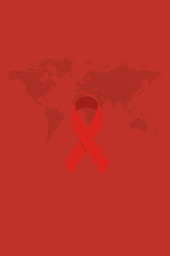The Mental Health Crisis: how are LGBTQ+ young people disproportionately affected?
Published in Public Health and Behavioural Sciences & Psychology

Mental health issues in young people have increased in recent years, with the LGBTQ+ community at particular risk of experiencing anxiety, depression and suicidal ideation. Studies show 52% of young LGBT people report recent self-harm, so it is clear change needs to be made, and fast.
Making progress in addressing this crisis is vital if we are to meet many of the United Nations’ Sustainable Development Goals. These staggering numbers must be addressed with more nuanced solutions for demographics that are disproportionately affected in order to reduce overall premature mortality and promote mental health and well-being (Goal 3.3). In this article, specific events and societal issues that contribute to this crisis in young LGBTQ+ people are explored, including minority stress theory, systemic healthcare issues, and the need for personalised mental health care.
In recent years, mental health referrals to the UK NHS have increased drastically for young people. Suicide is now the second leading cause of death for 10-24 year olds, with over four times more likely to attempt suicide than their peers. Many factors have had widespread effects, including isolation throughout the COVID-19 pandemic and the disruption this caused to social interaction. The spike in referrals also reflects a cultural shift that has normalised discussions around mental health, especially in more educated populations. People are more likely to take steps to address their poor mental health, seeking help in situations they may not have done prior to this societal change. Whilst issues like the COVID-19 pandemic and social media both impact young people’s mental health more broadly, they cannot fully explain the increased levels seen specifically within the LGBTQ+ community.
There are factors that uniquely affect LGBTQ+ young people, within schools or even the workplace. A BBC report showed that almost half of all LGBTQ+ students had experienced bullying for their sexual orientation – and that bullying based on sexuality or gender identity is the most common form of bullying. Bullying has a multitude of impacts, affecting not only self-esteem and emotional wellbeing, but also education and development.
Although much of this happens within school, LGBTQ+ young people are also vulnerable outside of education, where they face hate crime as well as bullying. An evidence review commissioned by the Government Equalities Office highlighted certain groups at particular risk of hate crime, specifically LGBTQ+ youth from Black, Asian and minority ethnic backgrounds, and gay men. Notably, young people are again more at risk, showing yet another factor contributing towards this mental health crisis. By identifying specific groups that are particularly vulnerable, this study draws attention to the need for an intersectional approach in tackling these issues. These problems cannot be addressed without considering sexuality alongside additional factors, including race, gender identity and socioeconomic status.
In addition, the experience of ‘coming out’ can have detrimental impacts on mental health. ‘Coming out’ refers to when somebody ‘chooses to share their LGBTQ+ identity with others’. For many, this can be a difficult experience and has been shown to have links with depression. There are many factors that contribute to a negative ‘coming out’ experience, including overcoming cultural norms and personal beliefs, which has led researchers to spend time exploring how different social groups describe their familial relationships and upbringing. Sometimes ‘coming out’ can weaken familial relationships, with almost half of all LGBTQ+ adults reporting estrangement from their families. Parental estrangement can have long-term emotional consequences in children, including permanent psychological damage. Often, this manifests in the form of depression or anxiety, highlighting how a negative ‘coming out’ experience further contributes to increased mental health issues within this community.
To better understand the combined impact of these risk factors, researchers in the Global North have proposed the term ‘minority stress theory’, referring to how specific stressors impact mental health within minority groups. Experiences such as bullying, discrimination and identity concealment are important predictors of mental health and have an even bigger impact when linked to sexual or gender identity. By using this framework, global LGBTQ+ mental health can be better understood, whilst still acknowledging that cultural differences contribute to feelings of societal rejection.
Beyond personal experiences, the widespread disconnect between the LGBTQ+ community and the healthcare system plays a huge role in this issue. Sexual and gender identities were misclassified as ‘mental health issues’ until starkly recently, and the shocking refusal of care for gay patients within the AIDS epidemic has caused huge amounts of distrust. Throughout the AIDS epidemic, the intense discrimination and stigmatisation of the gay community resulted in the deaths of thousands, a loss still felt by many. Discrimination in healthcare continues to be experienced today – around 1 in 7 LGBTQ+ people actively avoid seeking medical advice for fear of discrimination from staff.
There is a strong association between negative healthcare experiences and healthcare avoidance – suggesting that those struggling with mental health issues will not seek any further care following a negative experience with a healthcare provider. This avoidance of care goes beyond mental health services, affecting uptake of preventative care. One of the first steps in addressing mental health issues, and contributing towards multiple SDG targets (3.3–3.7, 10.2, 16.7), is promoting treatment access - and slowly rebuilding trust in the healthcare system could be a good place to start.
It is clear there is no easy way to address this crisis, and no single solution that could significantly change things. Whilst progress has been made in the acceptance of the LGBTQ+ community in modern society, issues such as hate crime, bullying and familial rejection are still prevalent. Rebuilding decades worth of broken trust in our healthcare system is also no easy task – but there are definitely ways to progressively make mental health services more inclusive and effective for LGBTQ+ patients. Research that has focused on these changes explored the idea of ‘patient centred care’, a concept that not only validates sexual and gender identities but benefits the wider population too. This approach puts a patient’s unique experiences, needs and desires at the centre of their care.
Young members of the LGBTQ+ community have expressed the need for ‘judgement free’ healthcare, and the desire to feel as if they ‘belong’ whilst receiving treatment. By working with this community, policymakers and healthcare practitioners could gain a deeper understanding of their perspective and help to restore trust in the healthcare system. Involving young LGBTQ+ people in the policy-making process for patient-centred care and empowering them to shape interventions may improve engagement and lead to improved health outcomes.
Attention has also been drawn to outdated aspects of medical education, with as little as 1-2 hours of LGBTQ+ specific training leaving healthcare practitioners underprepared to fulfil their caregiving responsibilities. The NHS has started working with the charity LGBT foundation, trialling a programme known as ‘Pride in Practice’ to develop and recognise inclusive healthcare practices. Pride in practice works to improve healthcare experiences and develop a service where patients feel seen and accepted. This foundation regularly interacts with the LGBTQ+ community and uses feedback to continually develop plans and strategies, placing personal experience at the heart of their mission. Through this work, staff training is constantly evolving as the varying patient needs become clearer. This initiative is a great example of how inclusive healthcare can be developed and implemented in different healthcare settings.
The LGBTQ+ youth mental health crisis is not easy to solve, but by addressing minority-related stress and issues within the healthcare system, steps can be taken to improve the situation. Through provision of inclusive care, patients can feel accepted, and healthcare professionals can continue to grow and develop from their experience.





Please sign in or register for FREE
If you are a registered user on Research Communities by Springer Nature, please sign in